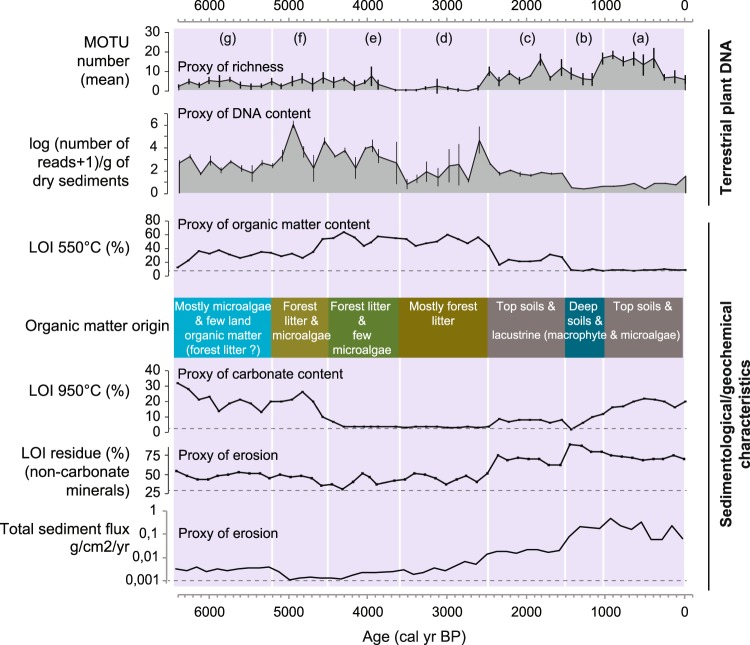Figure 3.
Comparison between global terrestrial plant DNA and the sedimentological/geochemical properties of sediments in Lake La Thuile over the last 6500 years. To study the behaviour of land plant extracellular DNA we focused on the proxies of the richness (mean and standard deviations of the number of MOTU) and the DNA contents in the samples (mean and standard deviations of the log(number of DNA reads + 1)/dry mass of sediment). These variables were compared to several selected sedimentological and geochemical data: the organic matter content (LOI550 °C) and origin, the non-carbonate mineral matter (LOI residue), the carbonates (LOI950 °C) and the total sediment flux (g/cm2/yr). The organic matter origin is determined from the combination of data from pyrolysis Rock Eval analyses (Hydrogen Index in mg HC/g TOC and Oxygen Index in mg O2/g TOC69), X-Ray fluorescence core scanner analyses (Si/Ti as a proxy of biogenic silica67), the lithological description and the aquatic plant DNA analyses (Supplementary materials, Figs 2 and 4). Seven specific phases of changes in DNA content were defined and discussed in the text (purple shaded areas a–g). They correspond to different sedimentological and geochemical characteristics, which inform hypotheses explaining the behaviour of the extracellular DNA from the catchment.

